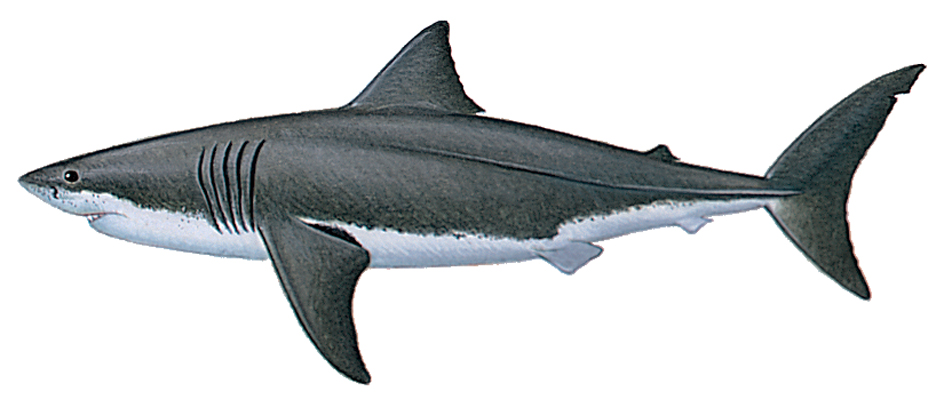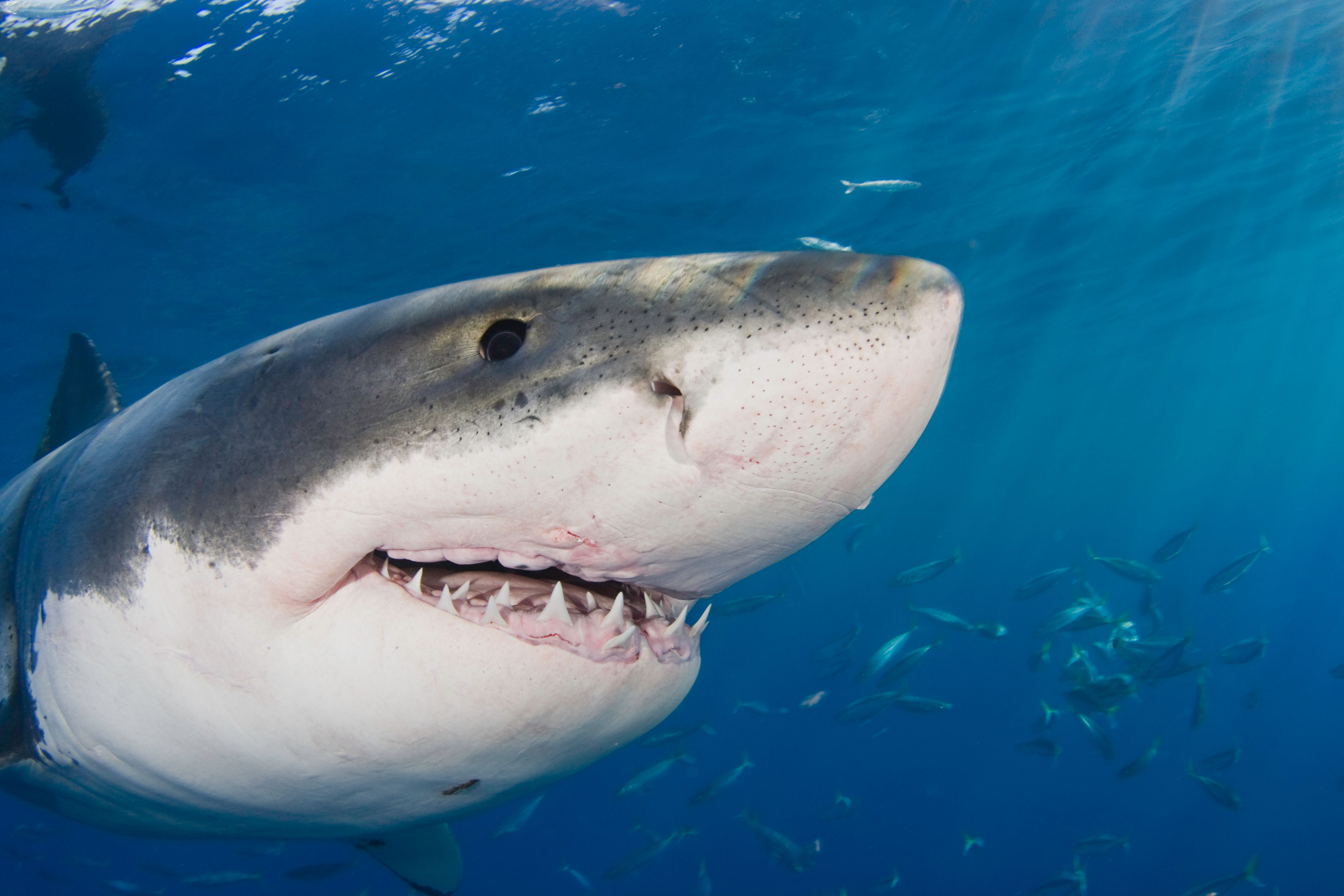Great white shark is a large, powerful predator. Shark experts and many others call it the white shark. Unlike most other sharks, white sharks have warm muscles and internal organs. By constantly swimming, they can keep their body temperature higher than the temperature of the water around them. These characteristics make them faster and stronger than most other sharks. White sharks are the largest of the predatory sharks.
Loading the player...Great white shark
White sharks have a dark gray back with a light gray to white underside. The light-colored underside gives the shark its name. The largest white sharks may grow to 21 feet (6.4 meters) in length. However, most females are 15 to 16 feet (4.6 to 4.9 meters) long. Males are 11 to 13 feet (3.4 to 4 meters) long. White sharks have sharp, triangular teeth with jagged edges. They can easily rip chunks of flesh from seals and other large animals.
Adult white sharks eat seals and sea lions as well as smaller sharks, rays, and fish. They also eat birds, dolphins, whales, squid, octopuses, and crabs. The sharks often ambush their prey, by stealthily approaching the animal from behind and beneath. The shark takes a big bite, then waits for the animal to bleed to death before eating it. Scientists think that by waiting, the shark avoids the claws and teeth of a struggling seal or sea lion.
Usually, white sharks are not hunted by other animals. But orcas (also called killer whales) occasionally kill white sharks and eat their livers.


White sharks live in oceans throughout the world. Marine biologists often attach tracking devices to white sharks to study their movements. From these devices, scientists have learned that white sharks migrate thousands of miles or kilometers in a year. Northeast Pacific white sharks spend about half of their time in coastal waters and the other half in the open ocean.
White sharks are ovoviviparous. In ovoviviparous sharks, the female carries the eggs until they hatch. Fertilized eggs develop into embryos inside the female’s body. Yolk and other nutritious fluids feed the embryos during pregnancy. As the embryos grow, they begin to eat unfertilized eggs produced by the mother’s body as food. This eating of eggs is called oophagy. The embryos finish growing by drinking a fat-rich fluid produced in the female’s body. They are born live at about 4 feet (1.2 meters) long. On average, 5 to 10 sharks are born at once. White sharks may live for over 70 years.
White sharks are known to occasionally bite humans. Shark bites are particularly common along the coasts of South Africa, South Australia, and the western United States. Scientists think that white sharks bite human beings because people look like seals to the sharks. The resemblance is especially great when a person swims at the surface or floats on a surfboard. Most people survive white shark bites, although their injuries can be severe.
Swimmers can reduce the chances of being accidentally bitten by avoiding areas where adult white sharks feed. Several websites and smartphone apps track white shark sightings. In some areas, at beaches white sharks are known to visit, volunteer “shark spotters” monitor the water with binoculars. If a shark is sighted, sirens warn swimmers to exit the water.
In the 1900’s, white shark populations experienced a historic decline, but they are beginning to recover in many places. Sport and commercial fishing reduced their numbers. Decreasing numbers of seals and whales also reduced white shark numbers. The sharks depend on these animals for food. When less food was available, the white shark population likely decreased.
As seal and whale populations have again increased, the number of white sharks has also increased. Laws that protect white sharks have also helped the population recover. Fear of white sharks once hindered conservation efforts. But today, countries with coasts where the sharks are found protect the sharks by law. These countries include Australia, Mexico, New Zealand, South Africa, and the United States.
Recent research has shown how white sharks are affected by climate change. Some northern areas were once too cold for young white sharks. But as average ocean temperatures increase, shark populations move to newly warmed waters, where they may need to feed on new types of prey. They may surprise swimmers or boaters who do not expect to encounter sharks in these waters. No one knows how white sharks’ use of these new areas may threaten local ecosystems and water safety. Some experts hope that because the white shark is a famous predator, these problems could raise public awareness of how climate change affects and harms ocean life.
